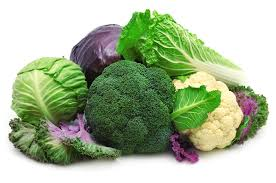by Amy Mullins, PhD, RDN | Sep 25, 2016
 A “sweet tooth” is something we are probably all guilty of having, to some degree. Eating the occasional cookie or slice of pie isn’t a crime and can have a place in the American diet, if consumed in moderation. Unfortunately, in our society there are enormous opportunities for sugary food, even in places where you’d least expect.
A “sweet tooth” is something we are probably all guilty of having, to some degree. Eating the occasional cookie or slice of pie isn’t a crime and can have a place in the American diet, if consumed in moderation. Unfortunately, in our society there are enormous opportunities for sugary food, even in places where you’d least expect.
Sugar in American food isn’t as obvious as it once was and seems to be lurking everywhere. Then there is the concept of “added sugars”, which may add to the confusion. Added sugar is exactly what it seems… additional sugar but with no nutritional benefit other than extra calories. The new food label has addressed this by showing grams of added sugars and also the % Daily Value based on the serving size. It’s important to check out the ingredient list on packaged products as well. Sugar has numerous forms and names, including brown sugar, raw sugar, corn syrup, lactose, dextrose, fructose, glucose, sucrose, high fructose corn syrup, honey, invert sugar, malt syrup, maltose, and molasses. The ingredients are listed in order of descending weight, so if sugar is a main ingredient in the product you will see it near the beginning of the ingredient list.
Is sugar bad?
Naturally occurring sugars, such as those in fruit or milk, are not considered added sugars. Natural sugars (carbohydrates) are part of many healthy unprocessed fruits, vegetables, and milk. These foods are good and are part of an overall healthy diet. The problem lies in the “added sugar” we often see in processed foods, even bread and yogurt can contain a large amount of additional sugar. We all know sugar has calories and extra calories can lead to putting on extra pounds. But, it’s not just our waistlines that may pay the price. A 2014 study published by the Journal of the American Medical Association-Internal Medicine found a “significant relationship between added sugar consumption and increased risk for CVD mortality”.
It seems that sugar may be causing more problems than initially believed, and until recently there haven’t been any official guidelines on how much sugar is acceptable. When the new Dietary Guidelines for Americans were released, this was a major factor to be addressed. A “Key Recommendation” calls for less than 10% of calories per day from added sugars. The American Heart Association goes even further with a recommendation of no more than 100 calories per day for women (about 6 teaspoons or 24 grams), and 150 calories per day (about 9 teaspoons or 36 grams) for men.
Currently, on average, added sugars account for almost 270 calories per day (more than 13%) and are particularly highest among children, adolescents, and young adults. Not surprisingly, beverages (soft drinks, fruit drinks, sweetened coffee and tea, energy drinks, alcoholic beverages, flavored water) account for 47% of all added sugars consumed in the U.S. (2015-2020 Dietary Guidelines for Americans).
What can we do?
Cutting down on sugary beverages such as soda, sports drinks, fruit juices, and syrupy coffee drinks is the first step in reducing our consumption of sugar. Reading labels and ingredient lists can help you identify how much carbohydrate and added sugar are in a product. Choose beverages with no-added sugars such as water, and limit or decrease portion sizes of grain-based and dairy desserts, sweet snacks, cakes, and candy. Choose unsweetened canned fruits, applesauce, and yogurt with no sugar added (2015-2020 Dietary Guidelines for Americans). The American Heart Association offers some additional Tips for Cutting Down on Sugar and ways to Sip Smarter.
With some label reading and determination we can change our consumption of sugar, reduce our waistlines, and reduce the risk of developing obesity-related chronic diseases.
Resources:
2015-2020 Dietary Guidelines for Americans
Added Sugars Add to Your Risk of Dying from Heart Disease, American Heart Association
Changes to the Nutrition Facts Label, FDA U.S Food and Drug Administration
Added sugar intake and cardiovascular diseases mortality among US adults, JAMA Intern Med. 2014 Apr;174(4):516-24.
by Dorothy C. Lee | Aug 28, 2016

Does lettuce turn brown and slimy in your refrigerator? Is that two-year-old frozen turkey still safe to eat? Should you dispose of that slightly moldy cheese? “When in doubt throw it out” is definitely a safe practice to follow. However, throwing food out is like throwing money away. A few simple guidelines for food storage can save dollars and time spent on shopping.
Dairy Do’s and Don’ts
- Buy milk in cardboard cartons or non-translucent containers. Translucent containers allow light to seep in, which can cause the milk to spoil. Store milk in a refrigerator that is set at 40° or lower. Don’t store milk in the door of the refrigerator. Items stored in the door of the refrigerator are more susceptible to warm air that enters the refrigerator each time the door is opened.
- Discard unused milk after the container has been opened for a week. Milk may be frozen for up to three weeks.
- Ice cream has a shelf life of two to four months as long as it is stored in a freezer that is set at zero degrees Fahrenheit.
- Yogurt should be used within seven to ten days of purchase.
- Butter may be refrigerated, tightly wrapped, for up to one month and be frozen for six months.
- Hard cheeses will keep for three or four weeks, tightly wrapped, in the refrigerator once they have been opened. Processed cheese spreads will keep for three to four weeks after opening.
- Purchase eggs before the sell by date. Store eggs in their original packaging on the middle or lower shelf of the refrigerator. Refrigerated uncooked eggs will keep for three to four weeks from the time they are purchased. Hard boiled eggs in the shell will keep for one week. Don’t freeze hard cooked whole eggs or egg whites. They will be tough and watery when defrosted. Raw egg whites can be frozen in ice cube trays.
Meat and Poultry
- Store meat and poultry in a refrigerator set at 35° to 40° Fahrenheit.
- Put packages of raw meat, poultry, or fish on a plate before refrigerating so their juices won’t drip on other foods. Raw juices often contain bacteria.
- Follow the “use by”, “keep refrigerated”, and “safe handling” information on the packaged meat label.
- Meat should be cooked or frozen within a few days of purchase.
- Use chicken by the sell-by date unless you plan on freezing it.
- Chicken and turkey may be frozen for nine months to a year.
- Cooked chicken or turkey should be eaten or frozen within three to four days of preparation.
Fruits and Vegetables
- Use refrigerated fruits and vegetables within a few days of purchase. Wash vegetables and fruits thoroughly right before eating or preparing.
- Fruits and vegetables stored at room temperature should be stored in perforated bags away from direct sunlight.
Canned Food Items
- Don’t purchase cans that are dented, bulging, or rusted.
- Store canned goods in a cool dry place.
- Rotate canned food items on a timely manner to establish a well-stocked pantry.
- Shelf life is determined by the acid content of the canned food.
To assure safe food storage, USDA recommends an appliance thermometer be installed in all refrigerators and freezer sections. Appliance thermometers are available at local supermarkets or discount stores. The refrigerator section should be set at 40°F and freezer section at 0°F.
Safe food storage is top priority to prevent foodborne illness. So remember, “Store It Right!”
For further information, contact:
Dorothy C. Lee, CFCS
UF/IFAS Extension Escambia County
3740 Stefani Road
Cantonment, FL 32533-7792
(850) 475-5230
dclee@ufl.edu
Reference: www.USDA.gov
by Heidi Copeland | Aug 28, 2016

The University of Nebraska – Lincoln (UNL) provides a monthly Calendar of Food Days, Weeks, and Months plus provides resources for selected national food-themes. http://food.unl.edu/september-food-calendar
The month of September boasts a variety of activities using produce that can be grown somewhere in Florida. In fact, many crops are grown locally and are in season now. According to the Florida Department of Agriculture and Consumer Services (FDACS), avocados, carambolas, grapefruits, guavas, mushrooms, oranges, peanuts, and tangerines are Fresh From Florida® this month. http://www.freshfromflorida.com/content/download/16800/269959/09September.pdf In addition, local Red Hills Small Farm Alliance’s seasonal produce includes arugula, Asian greens, eggplant, garlic, okra, southern peas, peppers, radishes, summer and winter squash, figs, Muscadine grapes, pears, and persimmons.
It is easy to incorporate more fruits and vegetables into our diets. Try celebrating September with Vegetarian Awareness Week and consume any of the aforementioned produce, as well as peanuts on National Peanut Day, which is on September 13th.
Peanuts are actually legumes, and can easily fit into many meal plans. Additionally, they are considered a quality protein source for vegetarians. And, according to the Peanut Institute “While ‘nut’ is in their name, peanuts actually grow underground, as opposed to nuts like walnuts, almonds, etc. that grow on trees and are sometimes referred to as tree nuts”.
Peanuts, along with beans and peas, belong to the single plant family, Leguminosae. Leguminosae, commonly referred to as legumes are edible seeds that are enclosed in pods. These plants provide an excellent source of concentrated protein plus, peanuts are rich in vitamins, minerals and phytonutrients, and contain mostly good fats and fiber.
It is fun (and healthy) to experiment with local, fresh Florida produce anytime of the year, and why not have a delicious time this September celebrating a food recognition day, a food awareness week or even an entire month by incorporating Florida fresh foods into your daily, weekly, and monthly meals?
Below is a recipe for a savory peanut sauce, which is very versatile for vegetarian meals and meals with meat or fish. Some ideas for using peanut sauce include:
- Over noodles
- As a dipping sauce for vegetables or spring rolls
- As a baste or condiment for chicken, pork, beef , fish or tofu
- In a stir fry
- In a wrap
- In a slaw
INGREDIENTS
- ¾ cup creamy peanut butter
- ¼ cup rice vinegar
- ¼ cup water
- ⅓ cup reduced sodium tamari or reduced-sodium soy sauce
- 3 tablespoons honey or agave nectar
- 1½ teaspoons grated fresh ginger or ½ teaspoon ground ginger
- 1 to 2 medium cloves garlic, pressed or minced, to taste
- ¼ teaspoon red pepper flakes, plus more for sprinkling
- Optional garnishes: sprinkling of chopped roasted peanuts and additional red pepper flakes
- INSTRUCTIONS
- In a 2-cup liquid measuring cup or medium-sized mixing bowl, whisk together the ingredients until well blended. If your peanut butter is particularly thick, you may need to add a bit more water to thin out the mixture (adding water will mellow out the flavor as well).
- Feel free to adjust to taste here—for example, sometimes I want my sauce more savory and add another clove of garlic, or a little sweeter, so I add extra honey.
- If you’re serving the sauce as a party dip, transfer it to a serving bowl and sprinkle with chopped peanuts and red pepper flakes for some visual interest!
by Heidi Copeland | Apr 1, 2016
Can you believe Florida fresh fruits and veggies are supplied to 160 countries around the globe! Particularly abundant right now are the vegetables commonly referred to as cruciferous vegetables. (However, many scientists are starting to favor the term brassica vegetables over cruciferous vegetables) These nutritious veggies are ones that you will want to eat on a regular basis as they are bursting with both macronutrients and micronutrients.
The Florida Department of Agriculture and Consumer Services lists, cabbage, cauliflower, and radishes as being abundant in April for world production. Locally though, growers are turning out broccoli, cabbage, cauliflower, collard greens, kale, kohlrabi, mustard, rutabaga, turnips, bok choy, Chinese cabbage and arugula, as well as radishes.
 There are many simple ways to include cruciferous/brassica vegetables into your diet.
There are many simple ways to include cruciferous/brassica vegetables into your diet.
- Eat them raw! Raw vegetables can make a delicious, crunchy snack especially when served with a low-fat dip.
- Use in recipes! Make slaw, soup or salad, main dishes and even condiments!
- Substitute! Did you know steamed, mashed cauliflower can replace mashed potatoes? Or that coarsely grated cauliflower can replace rice? Folks have even substituted a cauliflower mixture as pizza crust! (okay, it might be a stretch but it does taste good)
Shopping, preparing and storing
- Cruciferous/brassica vegetables are typically inexpensive and can also be found year-round, fresh or frozen.
- Store raw, uncut and unwashed vegetables in the crisper drawer of your refrigerator for up to five days.
Cooking methods:
There are three factors affecting nutrient loss when you cook cruciferous/brassica vegetables:
- Temperature
- Time
- Amount of water used.
The cooking method that best retains nutrients is one that cooks quickly, heats food for the shortest amount of time, and uses as little liquid as possible.
- Using the microwave with a small amount of water essentially steams food from the inside out keeping more vitamins and minerals than almost any other cooking method. http://www.health.harvard.edu/
- Steam vegetables over a small amount of boiling water until a fork can just barely pierce it. (You can save the nutrients that are lost when steaming cauliflower by using the leftover water in a soup)
- Braise, bake or broil, stir-fry or sauté
Cruciferous/brassica vegetables are very unique in that the flower, the root, the stalk and even the leaves can be eaten depending on which plant you are eating.
Try a cruciferous/brassica vegetable a new way or even try a new cruciferous/brassica vegetable a traditional way!
Cauliflower Salad
(Or even use a combination of cauliflower and broccoli and kohlrabi)
Ingredients
2 Tablespoons sliced or diced onion, red, green or white
1 head of cauliflower – including the tender stems, cut into small pieces (or even cut into small florets)
1 Tablespoon sugar
1 Tablespoon vinegar (red wine, white wine, apple cider, or rice wine)
¼ cup mayonnaise
½ cup dried cranberries (or favorite dried fruit)
Salt and pepper to taste
In a large bowl, whisk the sugar, vinegar and mayonnaise together. Season with salt and pepper. Toss in the onion, cauliflower and cranberries and stir until well coated. Eat it right away or savor for a few days.
http://www.freshfromflorida.com/content/download/16796/269931/04April.pdf

by Amy Mullins, PhD, RDN | Mar 11, 2016
 Celebrating the Academy of Nutrition and Dietetics National Nutrition Month each March is the perfect time to focus on your health needs and set new nutritional goals. A couple of key messages for this year’s theme include discovering new ways to prepare meals that trim sodium and practicing mindful eating behaviors. Make it your goal to incorporate at least one of the following tips into your lifestyle so you can “Savor the Flavor of Eating Right!”
Celebrating the Academy of Nutrition and Dietetics National Nutrition Month each March is the perfect time to focus on your health needs and set new nutritional goals. A couple of key messages for this year’s theme include discovering new ways to prepare meals that trim sodium and practicing mindful eating behaviors. Make it your goal to incorporate at least one of the following tips into your lifestyle so you can “Savor the Flavor of Eating Right!”
Get Creative with Herbs and Spices
Instead of adding salt or condiments high in sodium to your food, consider using herbs such as rosemary, basil, mint, oregano, or cilantro. Spices such as cinnamon, ginger, paprika, pepper, and cumin are another great option to include in your favorite meals. Flavoring with herbs and spices instead of salt can help reduce your sodium intake without sacrificing taste.
Appreciate Each Bite
Take time to appreciate every flavor, texture, and the overall eating experience at each meal. Eating slowly and enjoying every bite gives your stomach time to tell your brain that you are satisfied. This practice may help you eat less overall, as well as assist you in reaching your nutritional goals.
Practice Mindful Eating
Think about where you eat a majority of your meals. Eating at your desk or in front of a television can be distracting and may cause you to overeat. Aim to find a place where you can focus solely on your meal instead of trying to multitask while eating.
To learn more about how you can savor the flavor of eating right, visit www.eatright.org or contact your local UF/IFAS Extension Office.
 A “sweet tooth” is something we are probably all guilty of having, to some degree. Eating the occasional cookie or slice of pie isn’t a crime and can have a place in the American diet, if consumed in moderation. Unfortunately, in our society there are enormous opportunities for sugary food, even in places where you’d least expect.
A “sweet tooth” is something we are probably all guilty of having, to some degree. Eating the occasional cookie or slice of pie isn’t a crime and can have a place in the American diet, if consumed in moderation. Unfortunately, in our society there are enormous opportunities for sugary food, even in places where you’d least expect.



